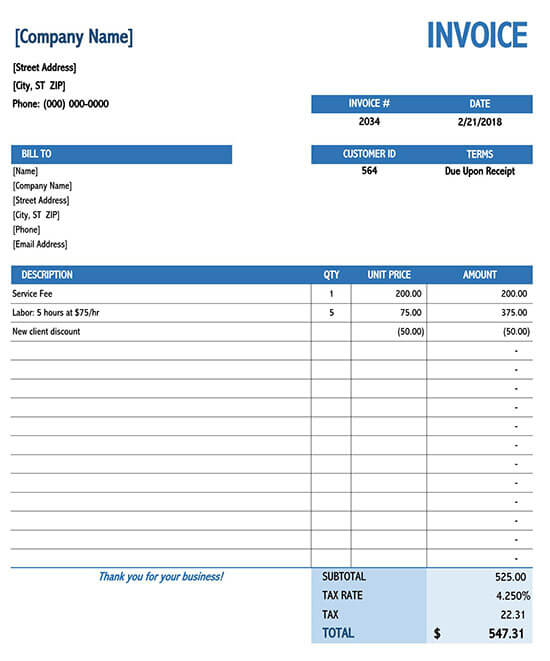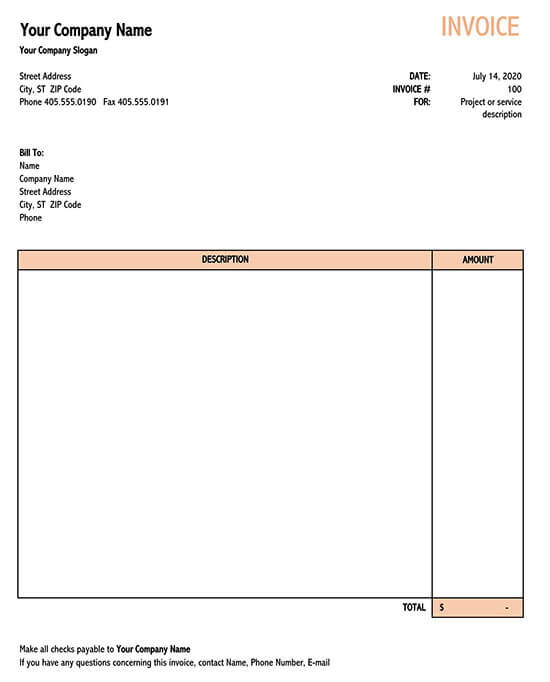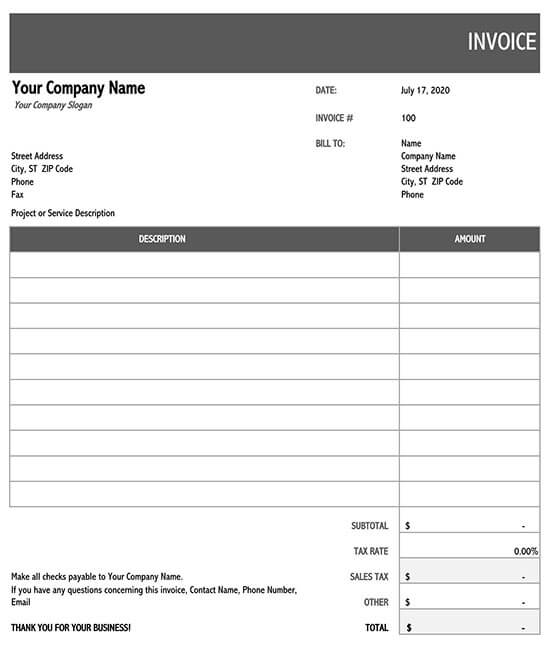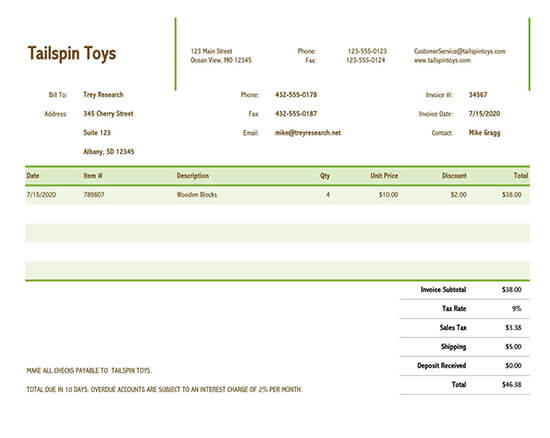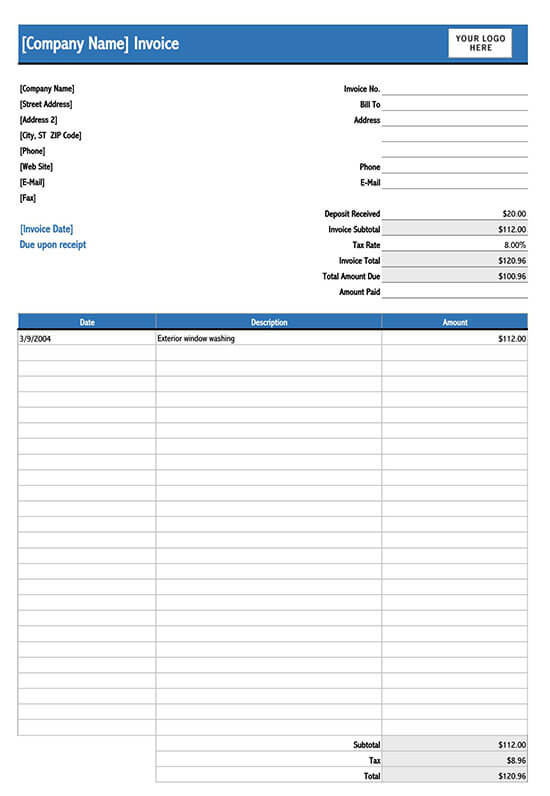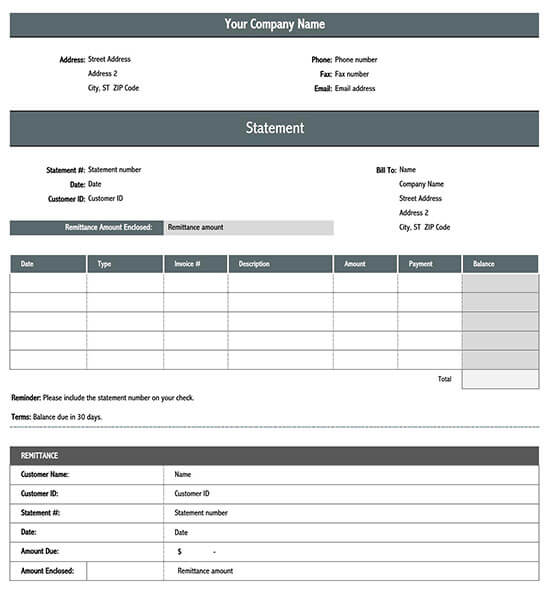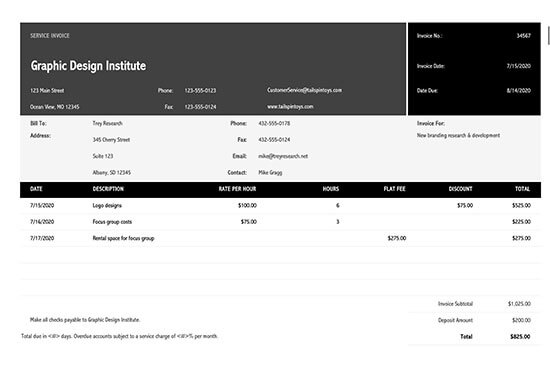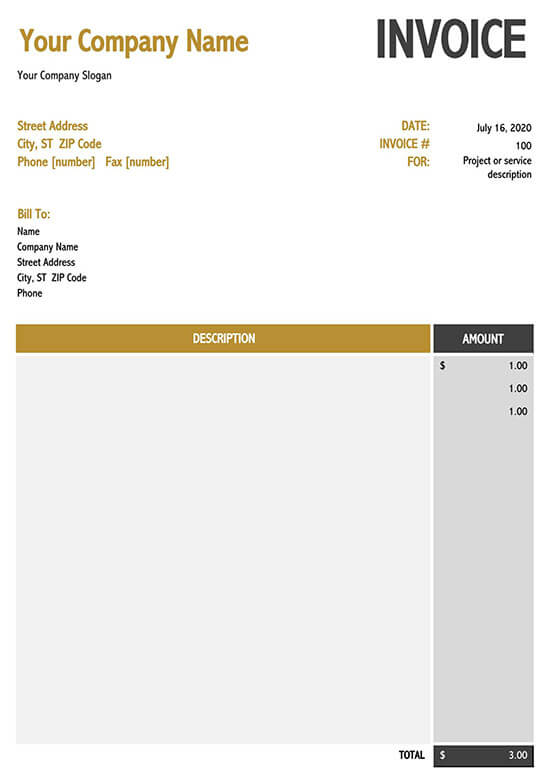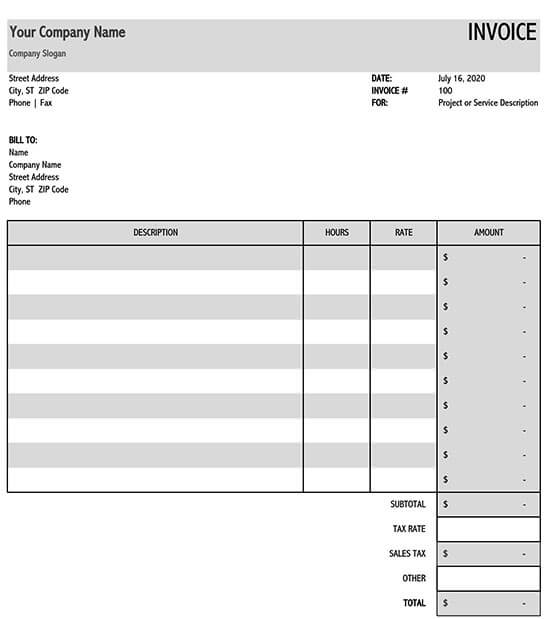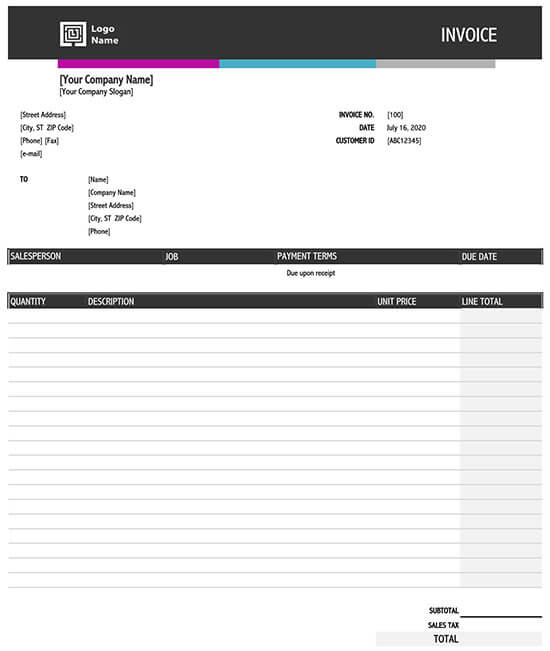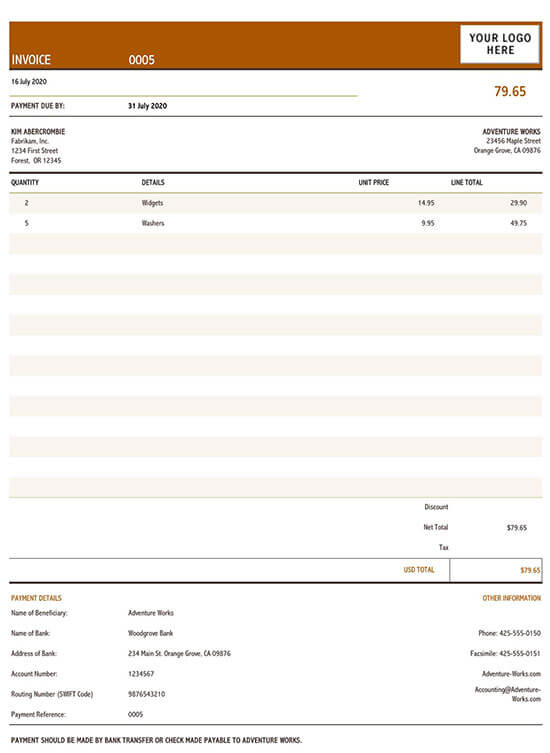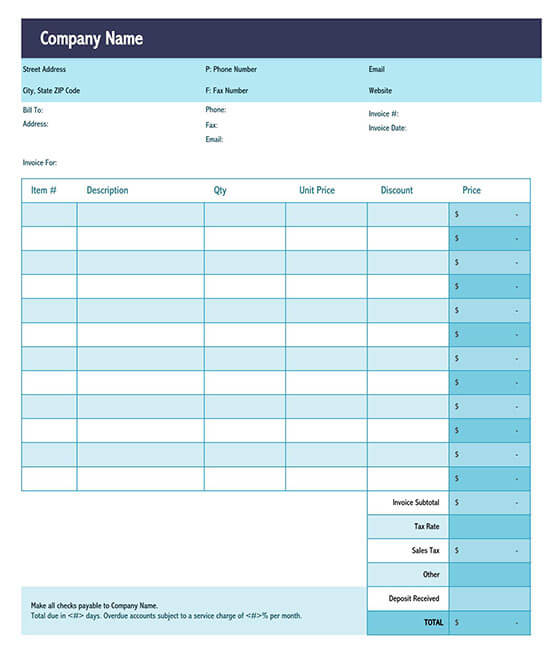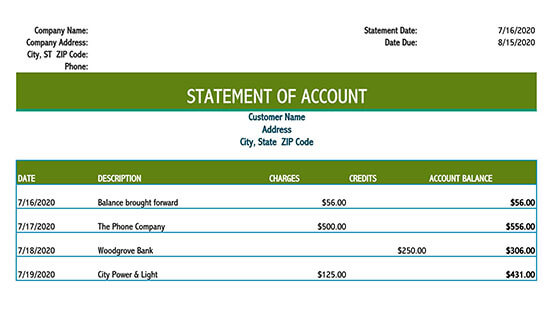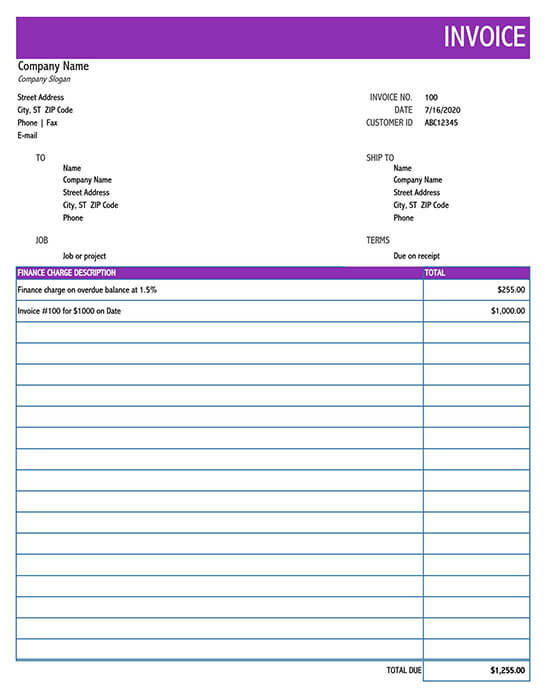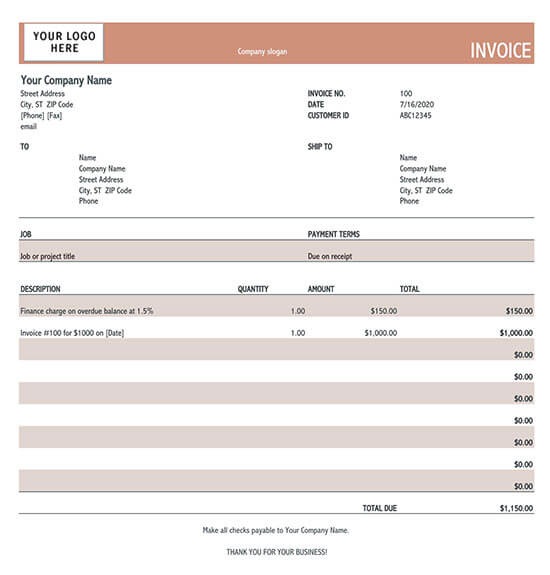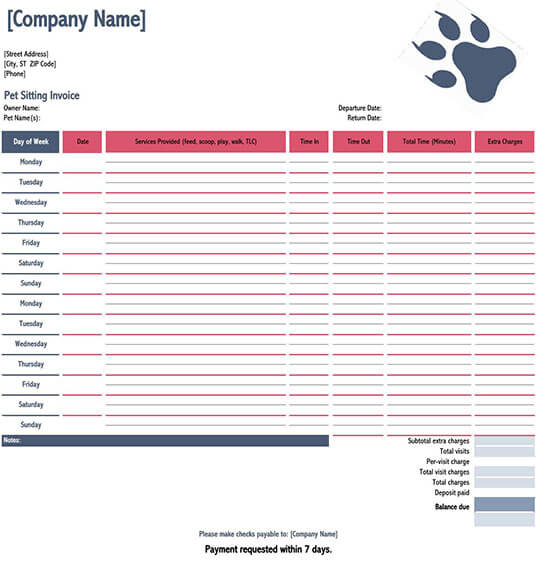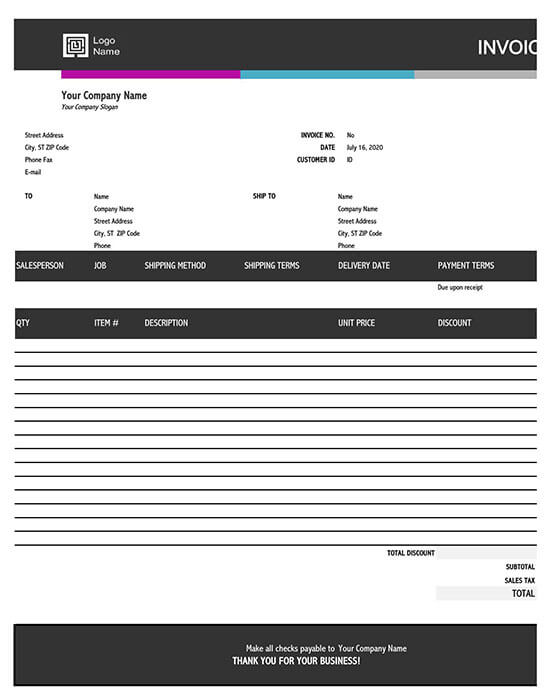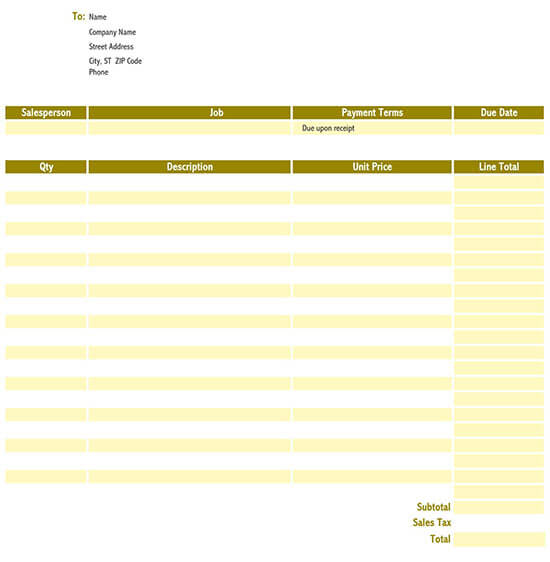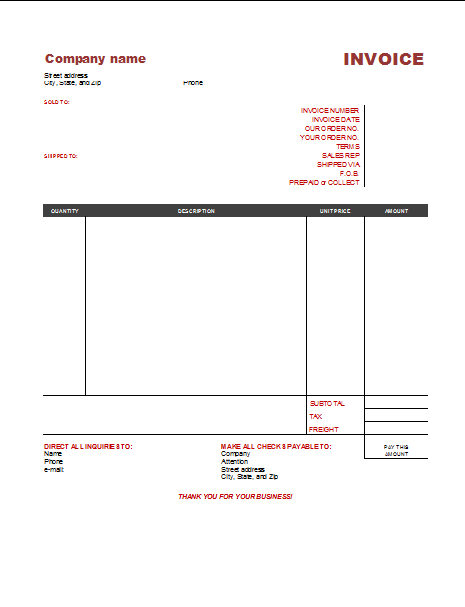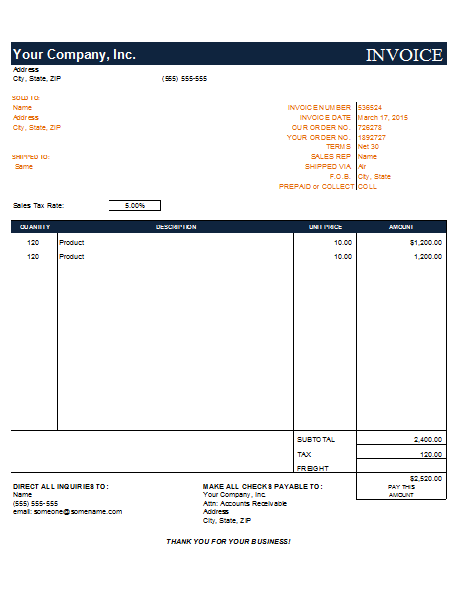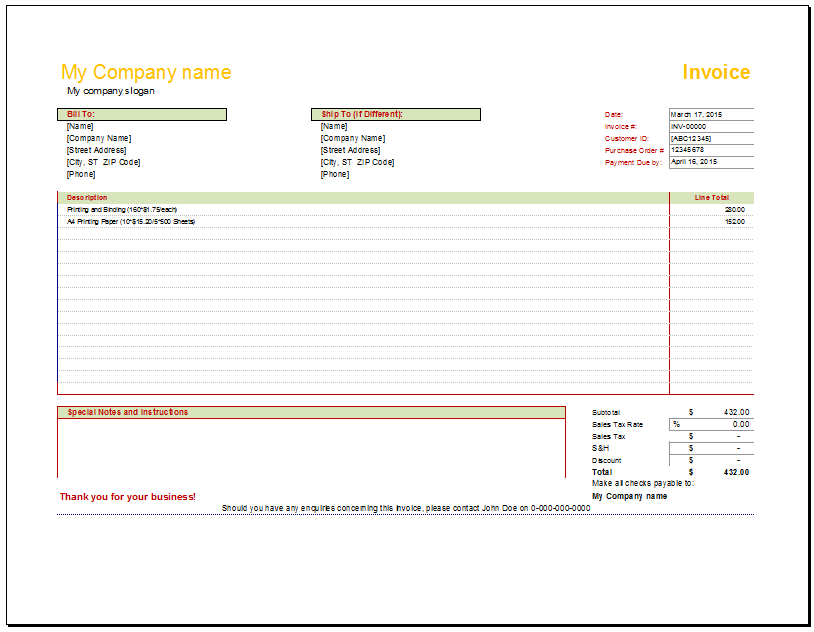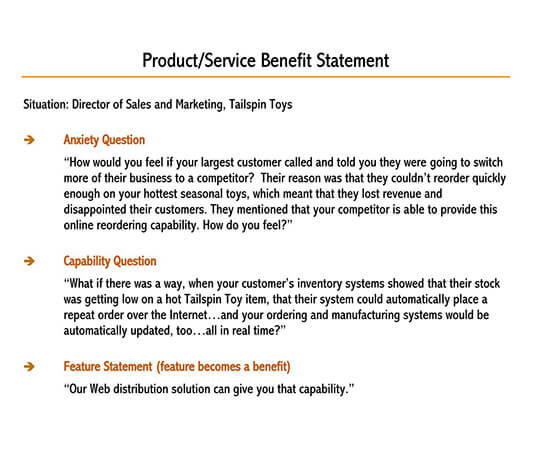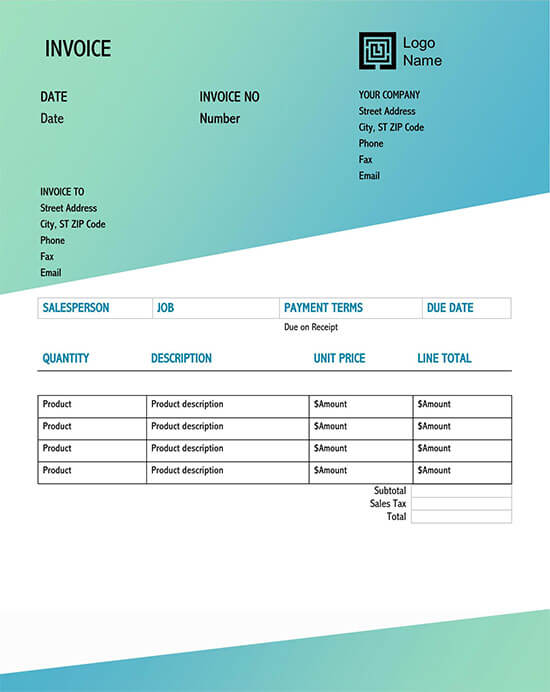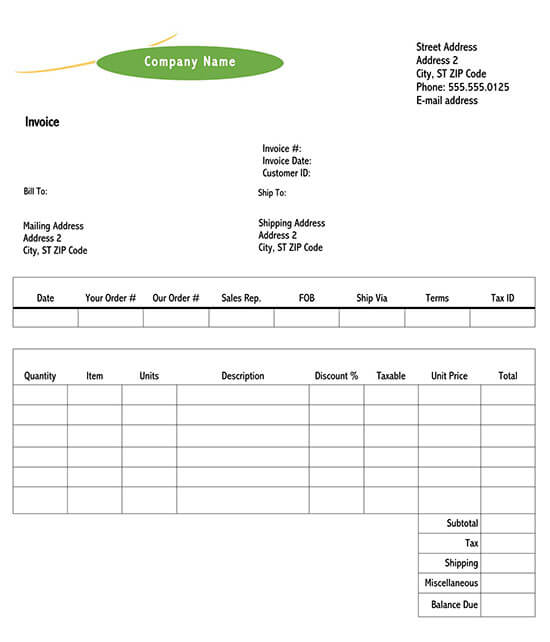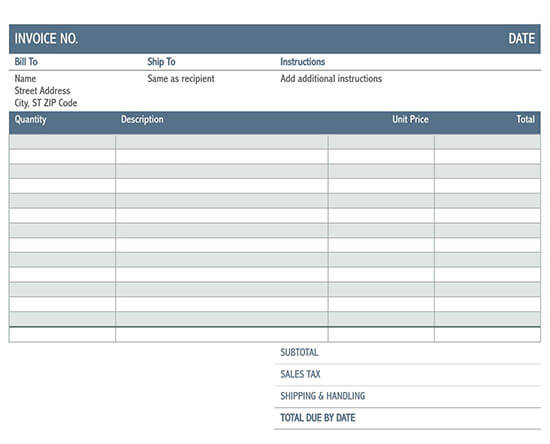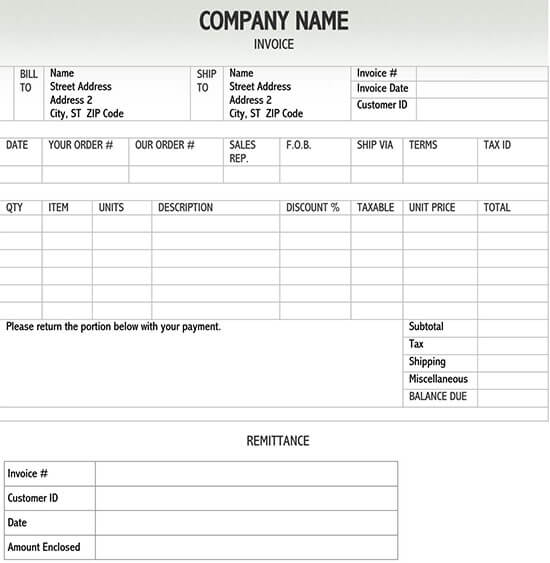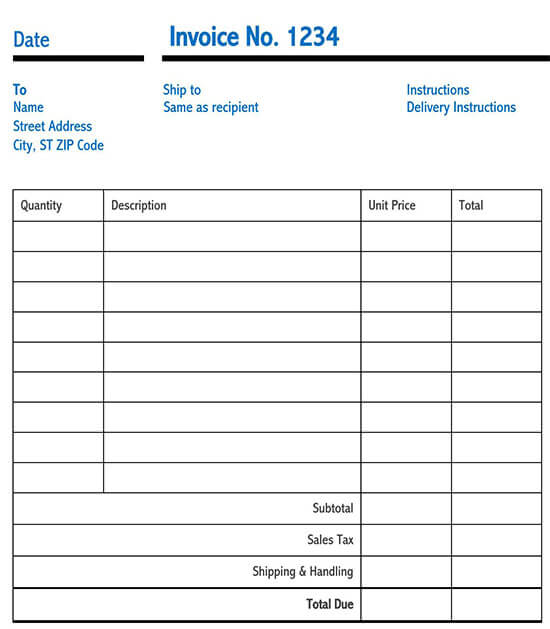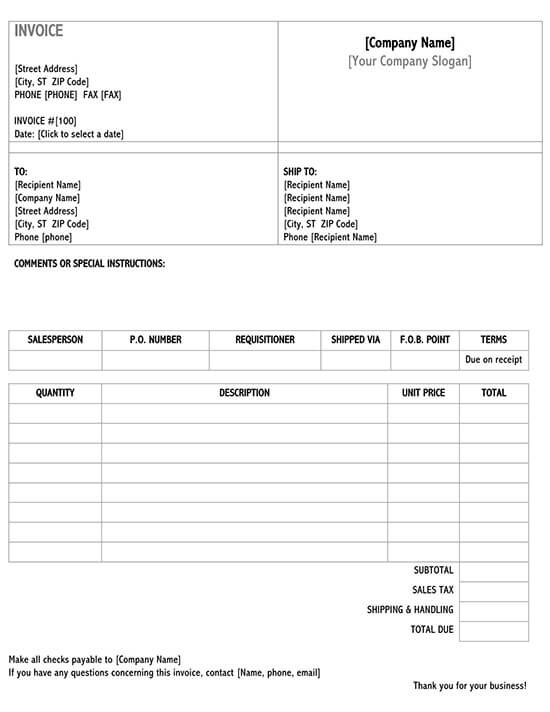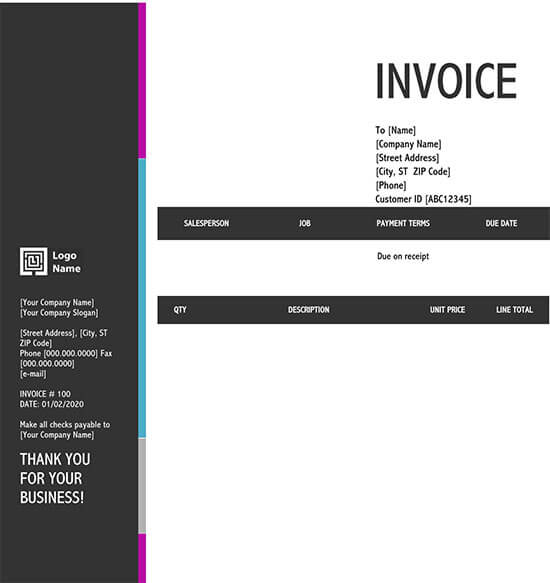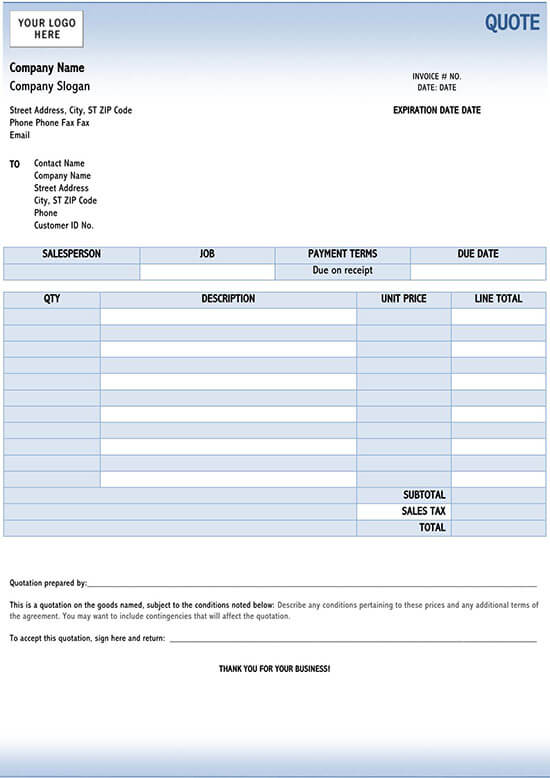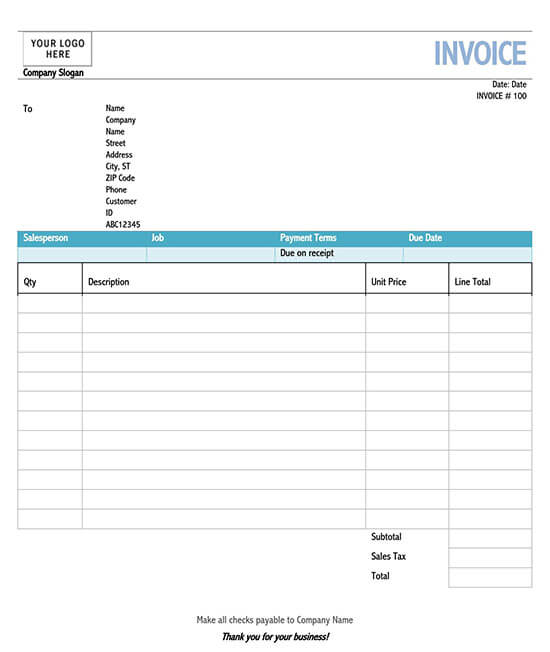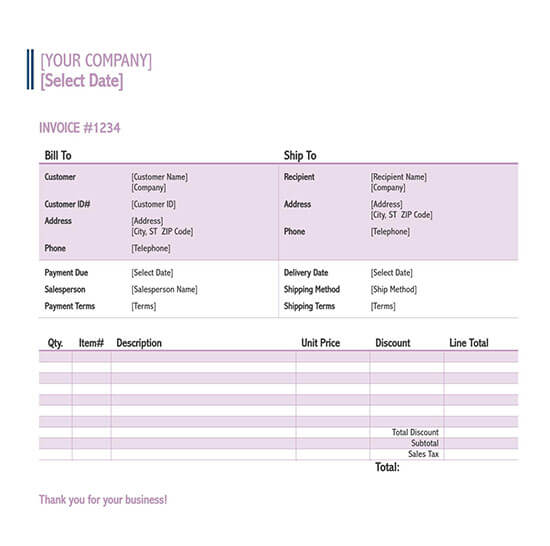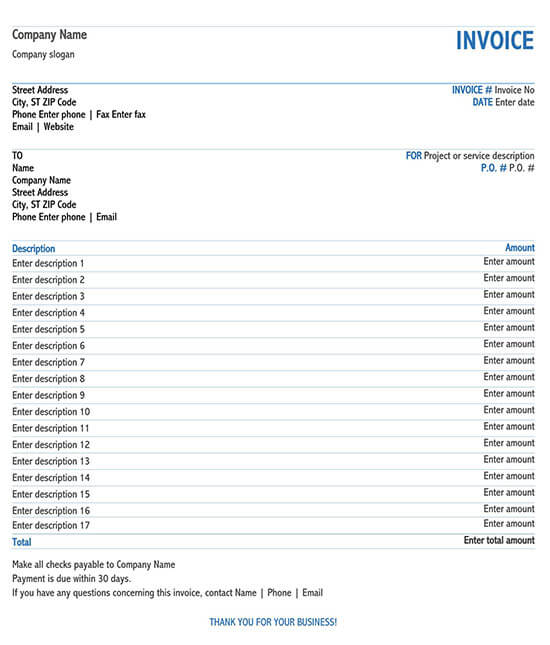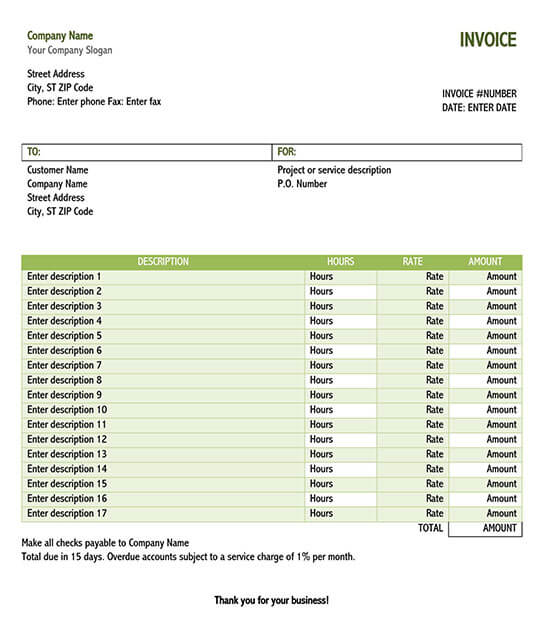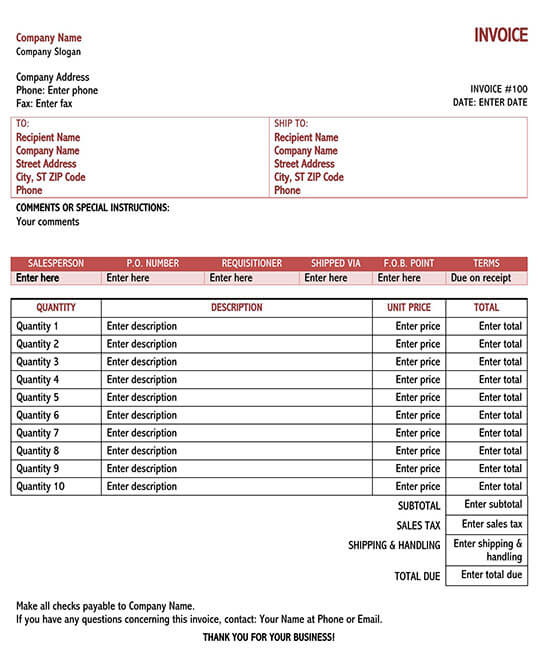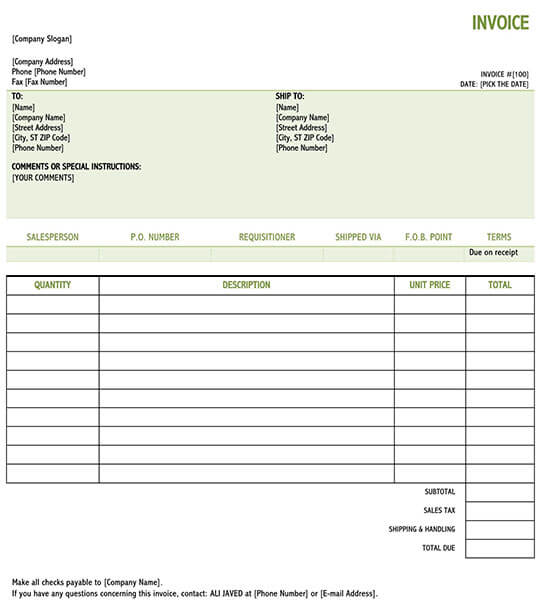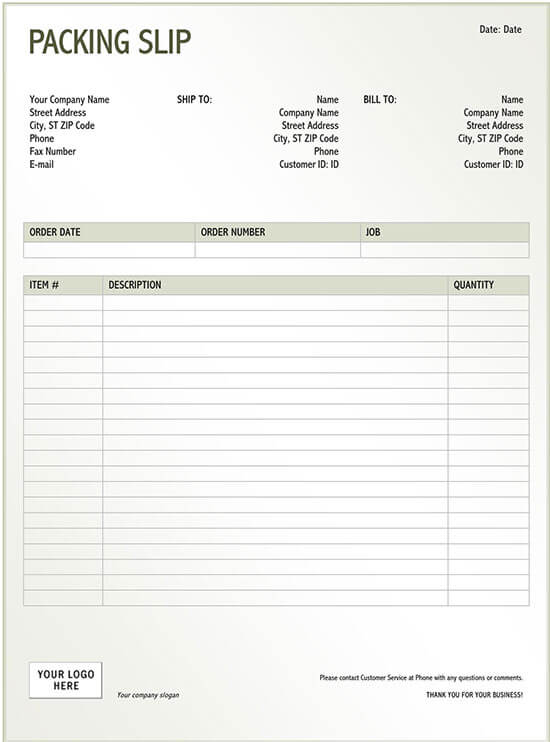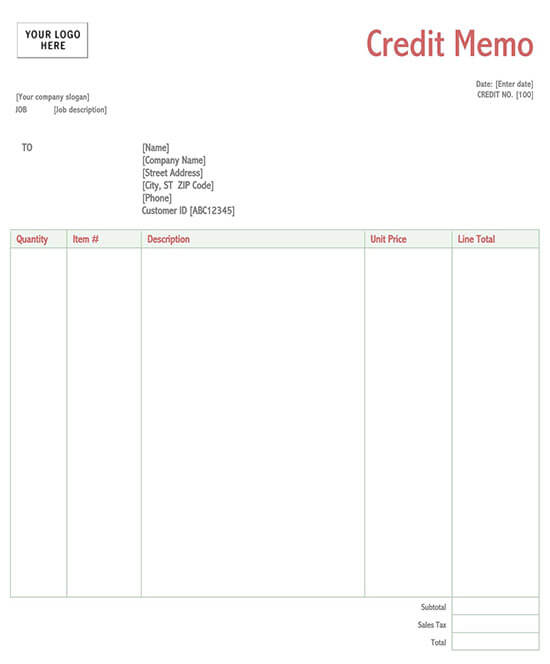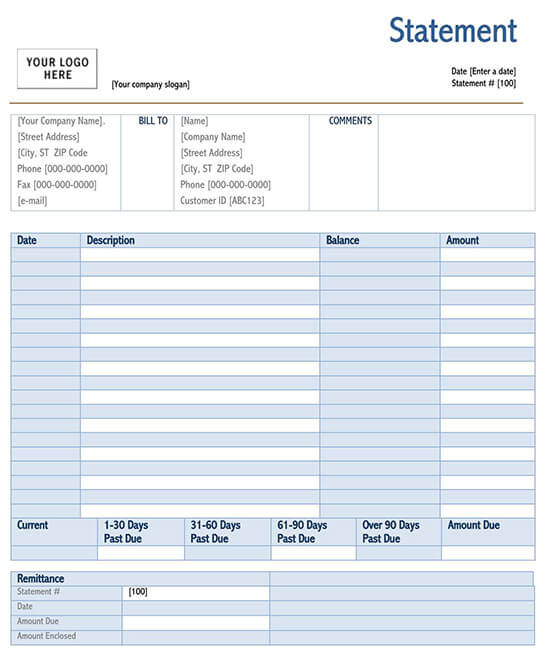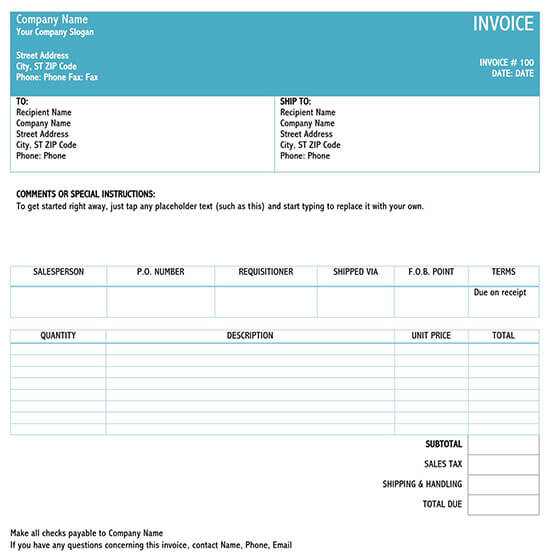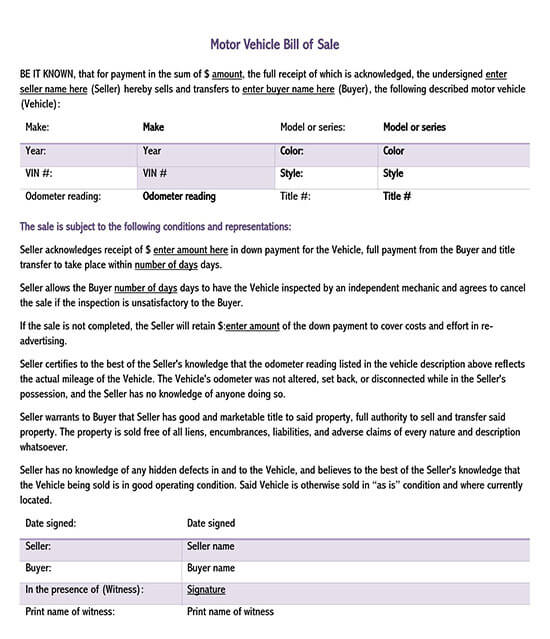Issuance of invoices is a standard practice in business transactions. An invoice serves as a formal request for payment from the seller. Therefore, if you have supplied goods or offered your services as a seller, your invoice should lay out what services or goods you have offered to the client and the corresponding costs.
It’s essential that your invoices are easy to understand, accurate, and professional-looking. Therefore, companies will have personalized invoices that reflect their line of business and specific requirements. However, a standard invoice will outline the goods/services rendered, date of transaction, itemized price list, and name of the seller and the buyer.
This article will examine how to use an invoice, its benefits, the different types and how to create an invoice template in Excel for your business.
Free Invoice Templates
What is an Invoice?
An invoice is a billing statement where you record the products or services sold and how much the customer has paid for them. It is sent out to the customers to indicate why they should pay you money and as an official request for payment. An invoice is a document businesses use to record and track the purchasing of goods and services from suppliers. In addition, the invoice serves as a time-stamped record of the transaction between you and the specific buyer.
Invoicing is a vital accounting procedure that facilitates internal audits and resources management. As such, invoicing your customers has many benefits, as discussed below:
Maintaining record
The document helps to keep track of your business earnings, expenses, and other payments you’ve made to suppliers. It shows the items purchased, the date, the amount paid, the balance, and other transactional details.
Legal protection
Invoicing protects you from any fraudulent lawsuits. This is because the document is proof of purchase and the applicable terms used in the transaction and can thus serve as evidence in case of a dispute with your customer.
Payment tracking
The document lets you track payments and ensure that your customers pay on time. This helps to avoid having debt on your balance sheet.
Easy tax filing
Invoicing keeps records of all transactions. This ensures you have a reference document of how much income was generated during the fiscal year, which is needed for tax reporting purposes. This way, you can file accurate returns.
Business analytics
Invoices can be used to identify customers’ buying patterns and habits. For example, it can help identify popular products, customer payment behavior, and peak buying times. This can, in turn, be used to develop and improve a company’s marketing strategies as it provides insight into how the mentioned aspects of transactions can be maximized and made more effective.
Keep customers happy
Maintaining a positive relationship with all your customers is crucial, especially regarding billing and payment collection for services rendered and goods sold. Invoicing makes it easy for businesses to communicate with customers regularly, keeping them happy.
Help you get paid
As part of your records, an invoice can help you determine which bills have been cleared and which are due. This assures you that all bills are eventually paid with time.
Invoices are branding bonus
The invoice makes an excellent first impression on your customer and thus, can be used to build a positive image for your business. An upmarket or sophisticated business will use invoice templates that are professional and reflect their brand. Elements that can be used to radiate professionalism include logo, typography, tone, and ensuring the invoice reflects the brand image.
Keep you organized
You can take inventory and track your finances and other transactions through invoicing. This helps you to remain organized and ensure things are in order.
Invoices are professional
Invoicing is an effective way of exhibiting your professionalism. It is a more formal form of payment than constant calls and messages.
Evolution Stages of Invoices
Invoices have been around for decades as means of recording transactions. Additionally, they have evolved from simple to complex business documents. The evolution stages of invoices include:
Stone invoice
The earliest invoicing was done on clay or stone tablets in Mesopotamia, 500 BC. Stone invoices record transaction details of merchants using basic arithmetic. The information was carved or engraved on the stone tablet.
Hand-written invoice
Hand-written versions then followed. Sellers would hand-write transaction details on animal skin and parchment, then on paper as paper became more popular. Hand-written paper-based types were more detailed than the previous version and contained most elements found in current versions of invoices.
Electronic invoice
The next stage of evolution saw the introduction of the electronic version. This innovation was incentivized by the invention of computers and the need to reduce the costs of running businesses. Electronic invoicing was faster, cheaper, and more accessible for businesses.
Online invoice
With the emergence of the internet, online invoicing was introduced. It was more convenient, secure, and less detrimental to the environment. Online invoicing included sending invoices through email and receiving payments online. Paperless invoicing saves time and money for companies that send out many bills.
Mobile invoice
With the invention of smartphones, mobile invoicing was introduced. Many businesses now use SaaS (software as a Service) and cloud-based services to streamline their invoicing process to automate invoicing. This ensured that invoices could be generated instantly. This way, the seller can invoice their customers at any location as long as they have an internet connection on a computer or mobile device.
Types of Invoices
There are many ways an invoice can be set up to suit your business. The following are the different types of invoice templates that sellers can use:
One-time transaction
One-time transactions can be incredibly unique and would thus require templates that can befit the specific needs of the transaction at hand. The different types of invoice templates you can use for one-time transactions include:
Proforma invoice
A proforma is an invoice used by businesses to estimate the numbers and quote the cost of goods or services to be delivered in the future. It is a preliminary bill that shows commitment to supply the goods and services at the outlined price and terms of sale.
Sales invoice
A sales invoice is the traditional sense of invoice that highlights the goods/services offered, their description, cost, date, and parties’ information. It is crafted after every sale, meaning it will vary between transactions.
Overdue invoice
This is an invoice that is past its due date. This happens when a customer fails to pay the money owed by the due date indicated in the invoice. Typically, overdue invoices will be followed by payment reminders and notifications, legal action or waivers, or write-offs.
Consolidated invoice
When you have multiple transactions going on simultaneously for a single customer, you can consolidate them into a single invoice. This type of invoice outlines the total, thus reducing the workload for customers making multiple payments.
Invoices for projects
When undertaking a project, you will likely have to issue multiple invoices. Examples of such invoices include:
Retainer invoice
This type is used to collect fees paid upfront before work commencing, that is, prepayments. A retainer invoice is issued to obtain funds for a project’s logistics, cushion against cancellation and grant your client access to your business services for work to be done in the future.
Interim invoice
An interim invoice is used to request partial payments toward the project’s completion. This type of invoice is also referred to as a progressive invoice. It is given monthly or quarterly, confirming progress and based on milestones made towards a specific project/program. It collects funds that go towards operational expenses.
Timesheet invoice
This invoice is based on the number of hours worked and the hourly rate used in calculating costs associated with the work done. The documents highlight the tasks, hours worked, hourly rate, project start and end date, and other applicable fees such as administrative fees. This type of invoicing is common among freelancers.
Final invoice
This is issued when the project has been completed, and thus, final payment for the work needs to be made. It pays for all services committed during the contract and takes off all expenses incurred during the delivery of these services.
Other invoices
There are several other invoices that you can use as means of collecting payment. These include:
- Mixed invoice: A mixed invoice compiles a credit and debit memo’s payment details and outlines the aggregate amount owed. For example, a credit memo indicates the amount the customer overpaid, while the debit memo indicates the amount the customer underpaid for a transaction.
- Commercial invoice: International transactions typically use a commercial invoice to detail what goods were sold and how much was paid. In addition, it can calculate applicable taxes and tariffs and get clearance at customs from the origin country and into the destination country.
- Recurring invoice: This invoice is used to collect recurring payments from customers. It is usually required for established invoicing agreements with a payment schedule in place. This can be weekly, monthly, or yearly.
- Digital invoice: A digital invoice is processed digitally, so you do not have to print it. The seller, however, has to provide details such as items purchased, quantity, prices, buyer’s name, and the total amount owed. The digital invoice can be created using spreadsheets, word processors, downloadable templates, specific invoicing software, and invoice generators. It is sent electronically, usually via email.
- E-invoice: E-invoices are automatically created and issued electronically without manual intervention. This means the system tracks the purchase order, bills the customer, and issues an e-invoice without involving the seller. With e-invoices, the entire accounting process, from a company’s accounts receivable (money owed to the company, e.g., credit) to accounts payable (money owed by the company, e.g., debt and liabilities), is automated. In addition, E-invoices are compatible with most billing and accounting software such that they can be used to file taxes directly.
Invoice Vs. Receipt
An invoice and a receipt have many similarities; for example, they are both issued by the seller. Both documents show that a transaction has taken place and are used to keep records. However, the primary purpose of an invoice is to collect payments, while the primary purpose of a receipt is to indicate that payment has been received from the customer for goods/services delivered.
Note: Each invoice should have a unique identifying number, known as the invoice number. The number is used to track payments. Most customers will turn down unnumbered invoices.
What to Include in an Invoice?
While it would be unconventional to list every possible detail of a product and service, you are expected to provide detailed information on what is delivered. In addition, since the invoice is used to collect payments, it must clearly show how much is owed for each item on the invoice. Below are the key things to include when creating an invoice.
Invoice number
The invoice number refers to a unique identifier for the invoice. Your invoices should be numbered consecutively and not replicated in any manner. This can also be the PO (purchase order) or reference number.
Date of service rendered
You must specify the date on which a product or service is rendered. This helps in remaining organized and determining which orders have been fulfilled and pending.
Date of sending the invoice
The date on which an invoice was sent is also significant. This helps you keep track of a transaction and helps you to determine if an order is due. The invoice also indicates when payment for an invoice must be made.
Contact and name of the seller
You must provide your contact details and the name of the company. Your contact information must include your email address, phone number, website address, and how to reach you if necessary.
Name and contact of buyer
You must include the name of the customer, the name of the organization, and their contact details. This information is needed if you need to follow up on an unpaid invoice.
Terms and conditions
Including the terms and conditions of the transaction in an invoice template is very important. For example, you can specify that all payments made will be subjected to a discount, a particular payment method, a particular service or cash on delivery, non-payment terms, and due dates.
A line detailing each product or service
You must include details about the item/service that you are delivering. Each product should be described on its line. The quantity must be noted in the respective units, such as parts, kilograms, ounces, liters, boxes, or units.
Cost per unit of product
The price of items is essential in an invoice as it helps you calculate the amount owed. Therefore, you must specify the cost per unit. For example, if you sell a product for $100, you must indicate $100.00 per item in your invoice.
Tax rates
Taxes refer to a charge included in a price at the time of purchase. The most common tax is VAT (value-added tax) and other added levies, including customs duties. You must specify the tax rate and the amount payable by the customer.
The total amount owed with currency
You must note the amount you have yet to receive from your customer. Indicate the total amount and the appropriate currency. The amount owed can either be a balance or the total amount.
A personalized note
The note area in the invoice is reserved for an optional remark that you can include. For example, you can make a personal note to the customer, such as “thank you.”
Late fees warning
Many salespeople or vendors may have a policy of charging late fees. You can use this section of the invoice template to indicate that late payment will attract a late fee.
Free Invoice Templates
Preparing an invoice is a tedious process, especially for large purchases, but using a template can help you to do it quickly, easily, and efficiently. There are plenty of free invoice templates available to sellers on the internet. We have provided such templates on our website to help our readers get started. The templates are customized depending on your business type, services/products, and industry. This is advantageous because the invoice will not seem generic or familiar to your customers.
Excel templates
Word templates
How to Create an Invoice in Excel?
Several free invoice templates are available in the market, but if you want to create your template, you can use Excel. Follow these simple steps:
Open a new document
Launch Microsoft Excel if you have not already done so. Click on “File” and then click on “New.” Next, click on “Blank Workbook.” If the “Blank Workbook” is already created, skip this step.
Remove gridlines
This is an optional step. You can remove the gridlines if you wish as soon as your blank workbook is created. This may be in the way when creating your invoice template. Click on “Page Layout” and then under “Gridlines,” deselect the “View” selection.
Create an invoice header
Each invoice should have a header. The components of a typical header are the title “Invoice or Invoice Template,” business logo, business name, address details, phone number, email, and fax. Click on the cell you want to position the different elements of your header and type or insert, depending on whether it’s text or image. Ensure to use a professional font, color, and font size of preference.
Add information
After creating a header, you must add information about the invoice and the transaction. For example, you can include the following.
- Start with the invoice number and the payment due date. You can include this on the left or right side of the invoice template.
- Include the buyer’s name, street address, city, state, and phone number. You should indicate “To:” before inserting the buyer’s details.
- You can create an itemized list that contains different information about the products sold. Create a row for each product and columns for the product’s details. Do so by navigating to “Tables” and selecting New. Create columns for the name and description of the item, price per unit, quantity, discount and taxes, and total product cost. Also, create sections for the total discount, subtotal for the entire transaction, total sales tax, and the total amount owed. You can personalize the tables by selecting from the different Table Styles given in Excel.
- Next, add formulas to make calculations in the invoice template. You can use the “SUM” function for addition. Simply go to the box where you want to capture the needed total and add the function by selecting the “fx” command. To find the total of columns, use the formula =SUM (column X: column Y). Repeat the process for other subtotals needed for discount, sales tax, and total money owed.
- A payment due date is specified at the bottom of the invoice template. If you’re to add a “thank-you” note, insert it at this point.
- You can now save the document. Save it in PDF format. You can now fill it, personalize it and send it to your customers whenever needed.
Quick Invoicing Tips
Following are specific tips and hints to keep in mind when invoicing your customers.
- Use an identifier. You should ensure that the invoice number has a unique identifier. This will help you to refer to it throughout the process. For example, you can use unique details such as the client number, date, or product type.
- Make every number sequential. Be sure to always keep the invoice numbers as sequential as possible. This will help you refer to it quickly and clarify when a particular order or transaction is placed. For example, consider using 1, 001, 0001, or A for the first order.
- Encourage one-time and prompt payments when sending invoices. You can consider pausing any services or work you offer if the customer fails to make timely payments. Also, consider asking for upfront payments.
- Whenever possible, use recurring invoice templates. It saves time and effort.
- Consider automating the invoicing process and making the payment process more convenient.
- Establish and maintain close relationships with your customers. Also, you can opt to negotiate the payment terms with the customers to ensure a payment approach that is convenient and suits their capabilities is used.
Key Takeaways
- Invoicing is critical to a vendor’s business, especially regarding accounting and internal audits.
- An invoice template provides the essential information to track transactions between a seller and their customers. It is a record of each transaction.
- Ideally, any charges outlined in the invoice must be authorized by the appropriate staff member.
- The common elements of a standard invoice are items sold, unit costs, payments terms, shipping and handling, payment amount, and other additional details.




















